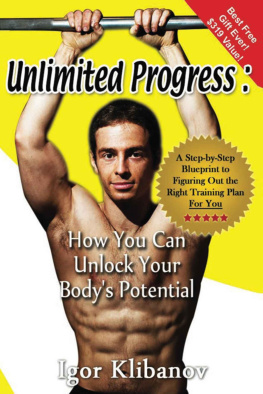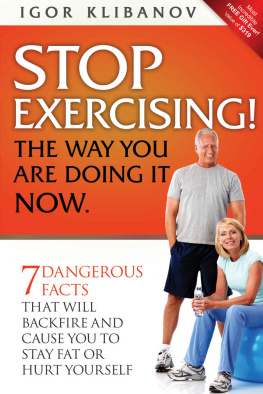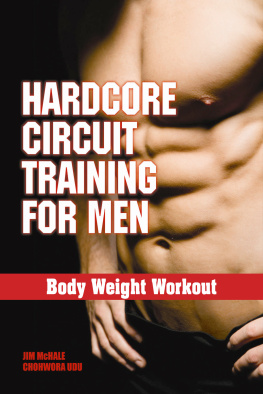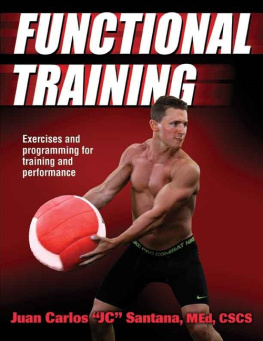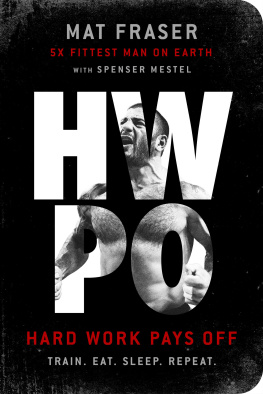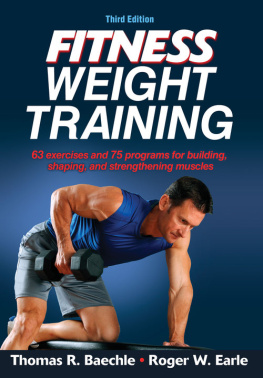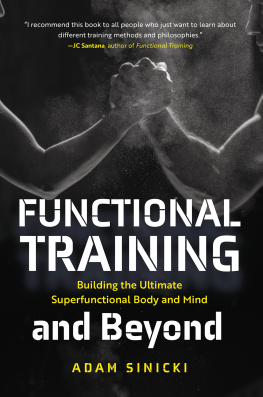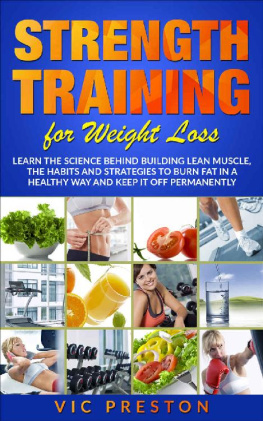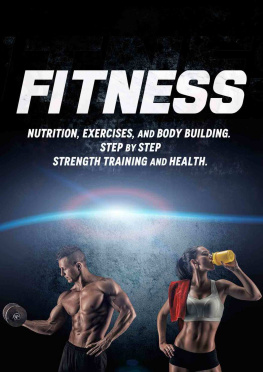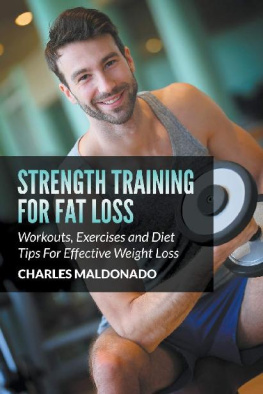Table of Contents
Chapter 1: Introduction (pg. 5)What is a plateau?The 4 different things you can do when you reach aplateau Why only 1 of those 4 things will break through the plateauHow this book is laid out The 3 super-principles that the book is basedon Who this book is for
Chapter 2: Fat Loss (pg. 17)Fat loss vs. weight loss: they arent the same thing 2 low-tech ways to measure your body fat The 6 different components of fat loss Why youreally have no idea how many calories youre putting into your body, and howmany calories are going out of your body The 15 habits of good fat loss diets: better than counting calories. Implement all these habits, and youllhave a body to die for How you can prevent regaining fat after you lose it all Whats more important for fat loss: resistance training or cardio?... Whythe fat burning zone really doesnt mean all that much Should you do steady state cardio or interval training for fat loss?... The importance oflifestyle: neglect it, and diet and exercise are less effective A NEAT way toburn extra calories How to identify which component is holding youback 6 reasons why you may not be losing weight despite doing everythingright.
Chapter 3: Muscle Mass (pg. 41)The difference between muscle size and perceived muscle size The 8components needed to increase your muscle mass How manycarbohydrates, proteins and total calories should you have to gain muscle?Why a big muscle is not necessarily a strong muscle The 2 different typesof muscle growth 5 time-tested methods of training that will get yourmuscles growing Which factor in your training is holding back yourprogress?... What is a reasonable rate of muscle gain?... The importance oflifestyle: neglect it, and diet and exercise are less effective 3 reasons whyyou may not progress despite doing everything right
Chapter 4: Strength (pg. 59)Get it straight: what exactly is strength?... Why improving your strength willimprove your speed, endurance, flexibility and other qualities The 12components of strength 5 neurological techniques that really improve yournervous systems ability to contract your muscles 3 methods of trainingthat increase your strength by targeting the nervous system The strengthdeficit test: do you need to grow your muscles to make progress?... 3 methodsof training for morphological adaptations How to identify your stickingpoint 4 methods to eliminate your sticking point How to identify if onemuscle is holding everything back, and how to correct it What is thestretch shortening cycle, and how you can use it to increase the amount ofweight that you can lift How to test which of the 2 components of thestretch shortening cycle is holding you back 4 reasons why you may notprogress despite doing everything right
Chapter 5: Power (pg. 99)The different between power and strength The 8 components of powerHow important is maximal strength for power?... A self-assessment to findout whether maximal strength and speed are holding you back 3 mainmethods of increasing your maximal strength What is starting strength?... 2tests to figure out whether starting strength is holding you back The 2components of the stretch shortening cycle How to identify which of these2 components is holding you back How to improve both componentsWhat it means to be stiff Why stiffness is actually necessary in somecases A self-test to help you identify whether you are stiff enough for yoursport or activity... The role of body composition in power How muchbody fat do you need for your sport?... 4 reasons why you may not progressdespite doing everything right
Chapter 6: Speed (pg. 129)What exactly is speed, and why sprinting is not an expression of purespeed The 7 components of speed The differences between reactiontime, movement time and response time The various different types ofreaction time How to improve the different types of reaction time Aself-test to assess whether movement time is holding you back How to improve movement time How to use the stretch shortening cycle to improve your speed How to find out whether the stretch shortening cycleis holding you back Is body composition holding you back?... 4 reasons why you may not progress despite doing everything right
Chapter 7: Muscular Endurance (pg. 147)What it is and what it is not The 7 components that make up muscularendurance The role of maximal strength in muscular endurance How toassess whether muscular endurance is holding you back How to figure outwhether the stretch shortening cycle is holding you back How to figure out whether the amortization phase is holding you back How to figure outwhether body composition is holding you back Lactate tolerance: what it is, and how to figure out whether its a limiting factor Capillarization andmitochondria: what they are, and how to use them to improve your muscularendurance A special case: power endurance 5 reasons why you may notprogress despite doing everything right
Chapter 8: Aerobic Endurance (173)The 2 components of aerobic endurance The 8 components that make up aerobic endurance What is heart rate reserve (HRR), is it holding you back,and how do you improve it?... What is aerobic power, and why it may be thesingle most important predictor of aerobic performance 3 Tests to figureout your aerobic power, and whether it is holding you back Aerobiccapacity: how it is different from aerobic power How to find out whetheryour aerobic capacity is holding you back How to improve your aerobiccapacity Lactate threshold: how it can limit your aerobic endurance, andhow to improve it why muscular endurance at the site of fatigue isimportant, and how you can improve it Velocity at VO2max: why just yourVO2max is not enough spring stiffness for aerobic endurance 4 reasonswhy you may not progress despite doing everything right
Chapter 9: Anaerobic Endurance (pg. 207)What is anaerobic endurance, and how its role differs between sports The6 components of anaerobic endurance How muscular strength can affectyour anaerobic endurance, and how to test whether it is holding you backHow to test whether you have enough muscular endurance at the site offatigue Why aerobic endurance can actually improve your anaerobicendurance and how to test whether its holding you back The role of thestretch shortening cycle in your performance in anaerobic enduranceevents Power endurance: the most critical factor in your anaerobicendurance performance 6 reasons why you may not progress despite doingeverything right
Chapter 10: Flexibility (pg. 233)What does flexibility really mean? Why being able to do the splits saysnothing about your shoulder flexibility The four different types offlexibility The 3 components of flexibility The difference betweenmobility and flexibility Why trigger points can decrease your flexibilityDo you have enough strength to be flexible?... 3 reasons why you may not progress despite doing everything right
Chapter 11: Coordination (pg. 248)What is coordination?... Whats the difference between general and specificcoordination?... The 10 movements that form the basis for most othermovements The 8 components of coordination How to developincredible control over your muscles with progressive muscle relaxationHow you can learn to differentiate between different body positions anddifferent distances Do you really need to improve your balance?... 7 waysto improve your balance How you can overcome a slow reaction time bydeveloping anticipation the 3 step process to learning new movementsthe 2 reasons why you may not progress despite doing everything right
Appendix 1: 8 Things You Should Know Before Hiring a PersonalTrainer (pg. 263)
Appendix 2: Your 4 Free Gifts (Personalized Dream Body MAP Sessionand Home Study Courses) pg. 267
Appendix 3: Resources the Author Recommends (pg. 273)About the Author (pg. 277)INTRODUCTION

